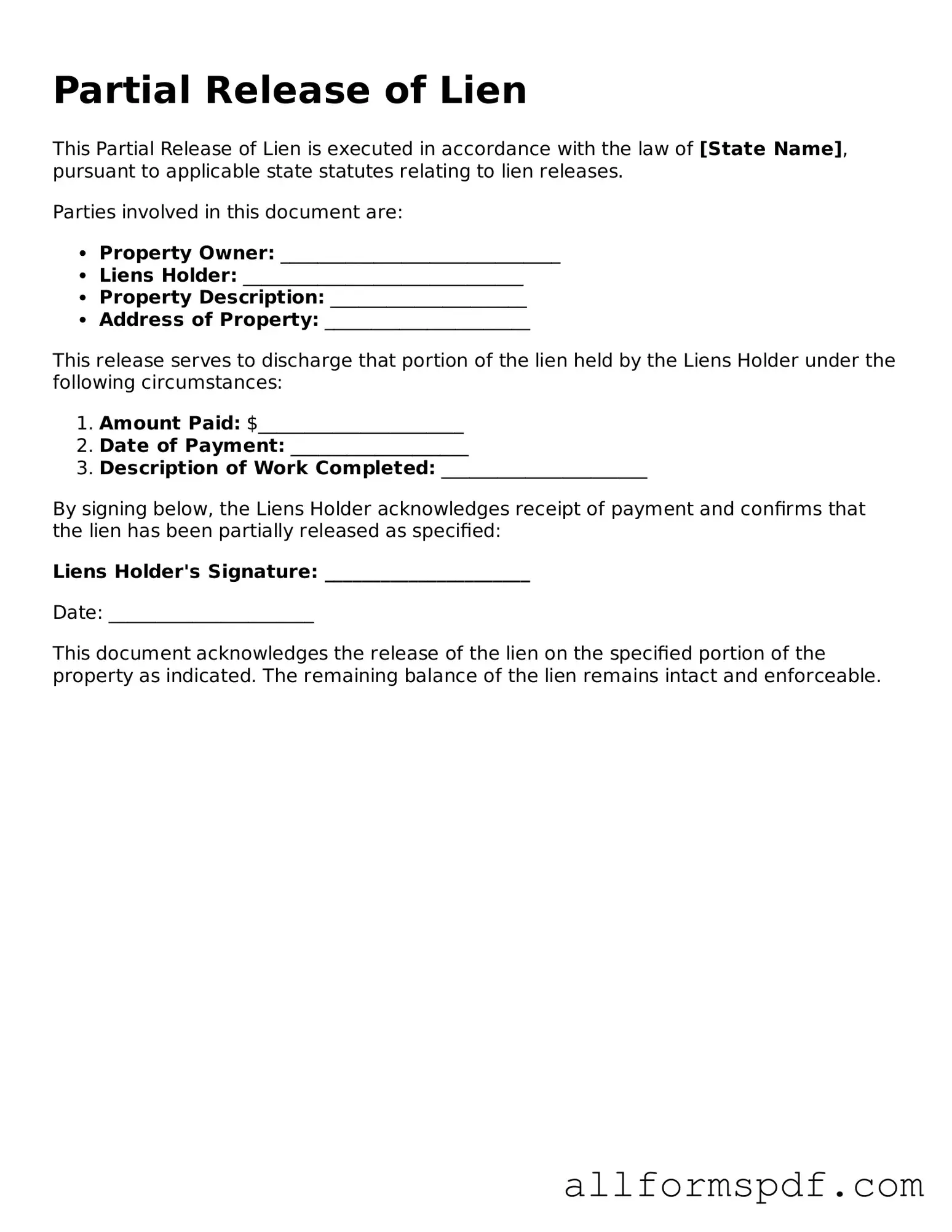Filling out a Partial Release of Lien form can be a straightforward process, but many individuals and businesses make common mistakes that can lead to complications. One frequent error is neglecting to include accurate property descriptions. A precise description is essential to ensure that the lien is correctly associated with the right property. Omitting details or using vague language can result in legal disputes or delays in processing.
Another mistake is failing to provide all necessary signatures. A Partial Release of Lien typically requires the signatures of all lienholders involved. If one signature is missing, the release may not be valid, leaving the lien intact and potentially causing issues for the property owner.
People often overlook the importance of dates. The date on the form should reflect when the lien is being released. If the date is incorrect or missing, it can create confusion regarding the timeline of the lien's status. This oversight can complicate future transactions related to the property.
Additionally, some individuals forget to check local requirements. Different jurisdictions may have specific rules about how a Partial Release of Lien should be completed or filed. Ignoring these local regulations can lead to the form being rejected or deemed ineffective, which can be frustrating for all parties involved.
Another common error is not providing sufficient supporting documentation. Often, a Partial Release of Lien should be accompanied by proof of payment or other relevant documents. Without these, the release may not hold up if challenged, causing further complications down the line.
Finally, people sometimes fail to file the form correctly. After completing the Partial Release of Lien, it is essential to file it with the appropriate local office, such as the county recorder or clerk’s office. Neglecting this step can leave the lien on record, which may affect future sales or financing options for the property.
